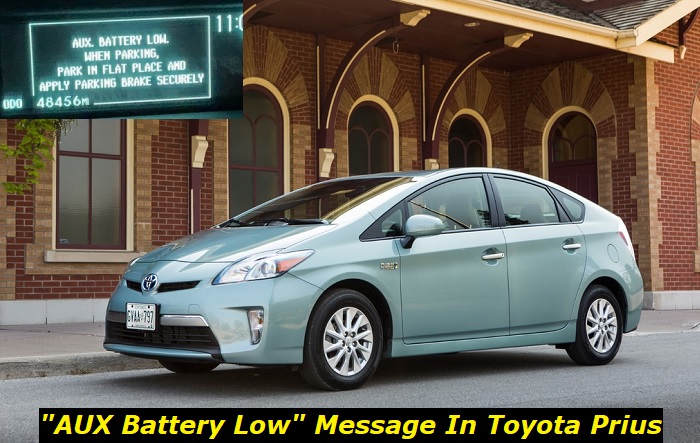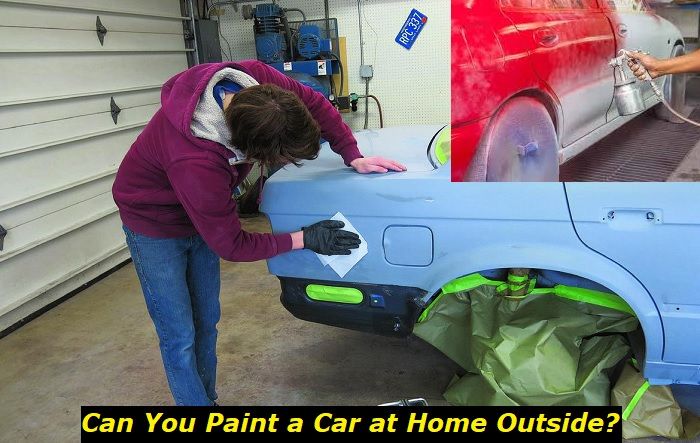If you have an electric vehicle, or a hybrid, like the Toyota Prius, then you certainly understand the importance of keeping your battery well-charged. After all, the battery is what keeps an electric vehicle going. However, most Prius owners don't realize that their car comes with a second "auxiliary" battery that might be just as important as the main battery. This can make the "Aux Battery Low" message particularly confusing when it appears on your Prius. What is this error message, and why are you seeing it?
Aux battery low message highlights
- Common reasons:12V battery has low voltage, aux battery is dying
- How to fix:charge the battery, replace the 12V battery
- Possible consequences:car may not start eventually
- Priority level:High
- Can you drive?Yes
- DIY repair:Possible
- Repair price range:$150-$250

What Is an Auxiliary Battery?
The Toyota Prius is a hybrid car that uses both a gasoline engine and an electric motor. The electric motor is driven by a large main battery located under the rear bench of the car. Running this motor requires a lot of power, so the Prius contains a second, smaller battery that powers the car's other electrical systems. This small battery is called the auxiliary battery.
The auxiliary battery is a conventional 12V battery that provides power for the Prius' electrical systems. This means that you have the auxiliary battery to thank for powering your car's heaters, headlights, radio, power windows, and other electronics. The auxiliary battery is normally charged by the main battery, which in turn is charged by the car's gasoline engine.
However, if the auxiliary battery does not charge properly, it's only a matter of time before the battery dies and you see the "aux battery low" message.
What Is the "Aux Battery Low" Error Message?
The "aux battery low" error message popping up on your console could be alarming, especially if it decides to show up while you're driving. This error message needs to be dealt with promptly because it will affect your driving experience. It can also stop you from starting or even accessing your car.
This error means that your Prius' auxiliary battery is at a charge level below a certain threshold. This means the battery is too low to effectively power your car's electronics.
What Happens When the Auxilary Battery is low?
You might not notice any effects immediately, but eventually, a low auxiliary battery will prove to be a real pain. It's best to get the auxiliary battery issue resolved as soon as possible, even if your car still moves and all seems to be normal. A dead battery could be only minutes away.
When the car is off, the main battery is disconnected from the rest of the car by a main battery relay. When the car is started, the auxiliary battery has the task of turning this relay on to connect the main battery. If the auxiliary battery is dead, it won't be able to activate the relay, and your car won't start.
Additionally, your door locks are powered by the auxiliary battery. This means you could find yourself locked out of your car once the battery gets too low.
What Causes a "Low Aux Battery" Error Message?
If your auxiliary battery is low, your first thought might be to wonder what could be wrong with it. A low auxiliary battery doesn't necessarily mean that you need to cut down on the electronic use in your car, although that could certainly help. A low auxiliary battery could simply be the result of a battery that has run down, or it could point to a deeper underlying cause.
Here are some of the main things to look for if you're receiving the "low aux battery" error message.
1) Low Battery
This is the most common cause of the "low aux battery" error message. As you can tell, a low battery will often trigger this error to warn the driver to take action.
When the battery is low, you will need to charge the battery. If you can get the car to start, running the car for a while will allow the gasoline engine to charge the main battery, which in turn charges the auxiliary battery.
If you can't get the car to start, then you will need to jumpstart the auxiliary battery. This gives the battery enough of a jump to activate the main battery relay and start the car.
2) Parasitic Drain
Parasitic drain doesn't mean your car has a tick stuck to it, though the idea is the same. A parasitic drain is a point in your car's electrical system that continually draws power, even when the car is off.
There are different causes of parasitic drain. Usually, parasitic drain means your car has a device plugged into it that continues to drain power. This could be a USB charger or a dash camera. The parasitic drain could also be caused by a short circuit or some other type of malfunction in the car's wiring.
3) Loose Cables
If the terminals of the auxiliary battery are loose, it might not form a solid connection with the rest of the car's electrical system. This could prevent the auxiliary battery from charging properly, causing the battery to run low and eventually die. Loose connections could also hinder the supply of electricity from the auxiliary battery, making it seem like the battery is dead.
4) Battery is Damaged
Auxiliary batteries are just like conventional car batteries; they don't last forever. Due to wear, age, temperature, or physical impact, your auxiliary battery can end up damaged and no longer able to function. When this happens, the battery might charge slowly, or have difficulty holding a charge for long.
What Can You Do About the "Aux Battery Low" Error Message?
If you're trying to get ahead of your "aux battery low" error before it becomes a big deal, you'll need to find the cause of your problem and fix it. If your battery is already completely dead, then you'll need to find a way to access or get your car started.
Here are the different ways to deal with the different causes of the "aux battery low" problem.
1) Jumpstart the Auxiliary Battery
If your auxiliary battery is completely dead, and you can't get your Prius to start, a jumpstart is your best friend. This will provide the auxiliary battery with enough juice to activate the main battery relay and start the car.
Jumpstarting a Prius is a little tricky for several reasons. Mainly, in any Prius from before 2016, the battery is located in the trunk instead of the hood, and the trunk won't open when the battery is dead. The smart key won't unlock the trunk or doors when the battery is dead either.
Fortunately, you can get around these obstacles by following the steps below.
- Remove the hidden key from the smart key. Use the push tab along the side of the key to slide the hidden key out.
- Open the door and release the hood latch.
- Look for the car's jumpstart terminal. It has a red cover.
- Lift the red cover and connect it to the positive terminal. Connect the negative terminal to any metal part of the engine.
- Jumpstart the car.
For a Prius from 2016 forward, the auxiliary battery is located in the hood. This means you simply need to open the hood and jumpstart your car like normal.
After jumpstarting your car, allow the engine to run for some time so that the batteries can charge.
2) Check the Battery Connections
Take a look at your car's battery terminals to make sure they are well connected. Tighten the connections if needed. If the connections seem to be tight, you can use a tool like a wrench to tap the terminals and try to jostle them into a better connection.
3) Replace the Damaged Battery
If your auxiliary battery fails to hold a charge after being charged, or it needs to be jumpstarted frequently, then it might have reached the end of its life. A damaged battery won't hold a charge for long and is more trouble than it's worth. If your battery is damaged, you will need to have it replaced.
Conclusion
The "aux battery low" message in your Toyota Prius means that the auxiliary battery has reached a dangerously low level of charge. If you don't address the issue on time, the battery could die completely, leaving you unable to start or access your car easily.
A low aux battery could be the result of a damaged battery, parasitic drain, or loose battery connections. If the battery is completely dead, then a jumpstart should be your first course of action. If the battery fails to charge after a jumpstart, then tightening the battery connections and replacing a damaged battery will usually solve the problem.
About the authors
The CarAraC research team is composed of seasoned auto mechanics and automotive industry professionals, including individuals with advanced degrees and certifications in their field. Our team members boast prestigious credentials, reflecting their extensive knowledge and skills. These qualifications include: IMI: Institute of the Motor Industry, ASE-Certified Master Automobile Technicians; Coventry University, Graduate of MA in Automotive Journalism; Politecnico di Torino, Italy, MS Automotive Engineering; Ss. Cyril and Methodius University in Skopje, Mechanical University in Skopje; TOC Automotive College; DHA Suffa University, Department of Mechanical Engineering






Add comment